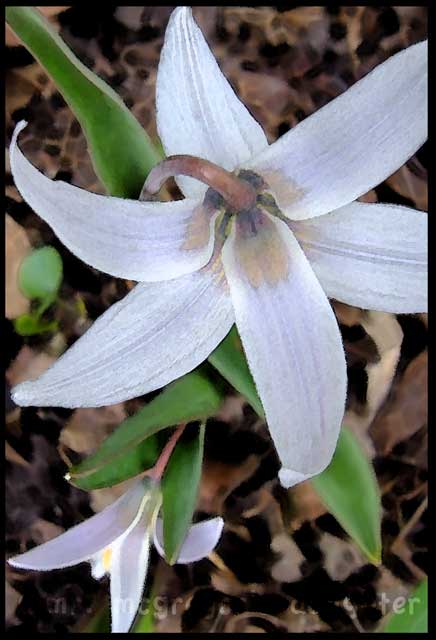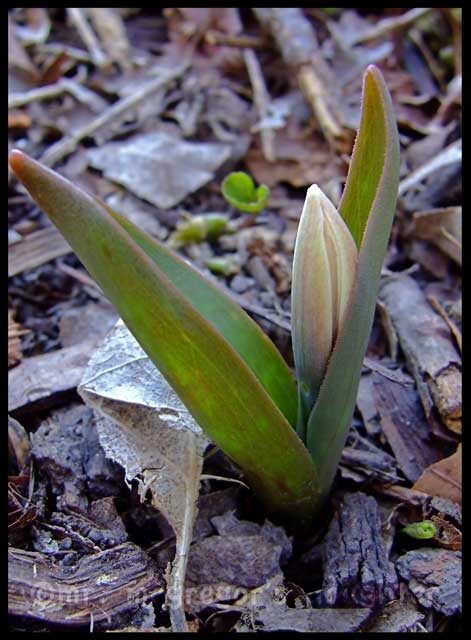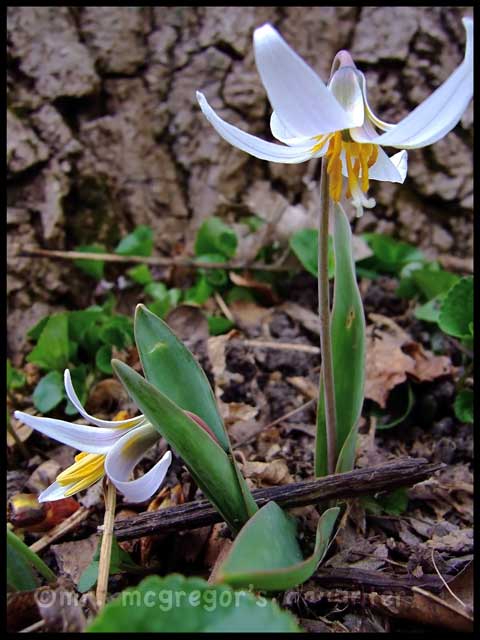
Erythroniums aren't the best known garden plants, and the most popular ones, Erythronium dens-canis, the dog-toothed violet, and E. americanum, aren't native to my corner of Northern Illinois. But under the trees in local wild areas, one can often see a pool of palely mottled leaves in spring. If conditions are right, there may even be little white blooms, the hallmark of Erythronium albidum, the trout lily. Unlike so many plants with the common epithet "lily," Erythronium albidum is a member of the Liliaceae family. It is difficult to find for purchase, despite being native to most of the Eastern United States. I got mine from Arrowhead Alpines, but it's not among Arrowhead's listings this year.
It's not a big, splashy bloom, or a statuesque plant, or one with interesting foliage all season. This 4-6" Erythronium sprouts,

blooms,

then fades and disappears very rapidly, lasting only a couple of weeks. Last year, they bloomed from April 2 through April 16. The blooms don't even stay open all the time, closing at night and opening with the sun.

Erythronium albidum is also very slow to increase. So why bother growing it?
I grow it because it's such a simple, charming plant.

It reminds me of a very tiny Easter lily. Trout lily also provides nectar and pollen for a variety of bees and early butterflies.
Trout lily prefers dappled sunlight in soil that is enriched with leaf mold. It is adaptable to various soil conditions and moisture, and grows in Zones 3 to 8.
This post is a late entry for Wildflower Wednesday, hosted by Gail of Clay and Limestone.